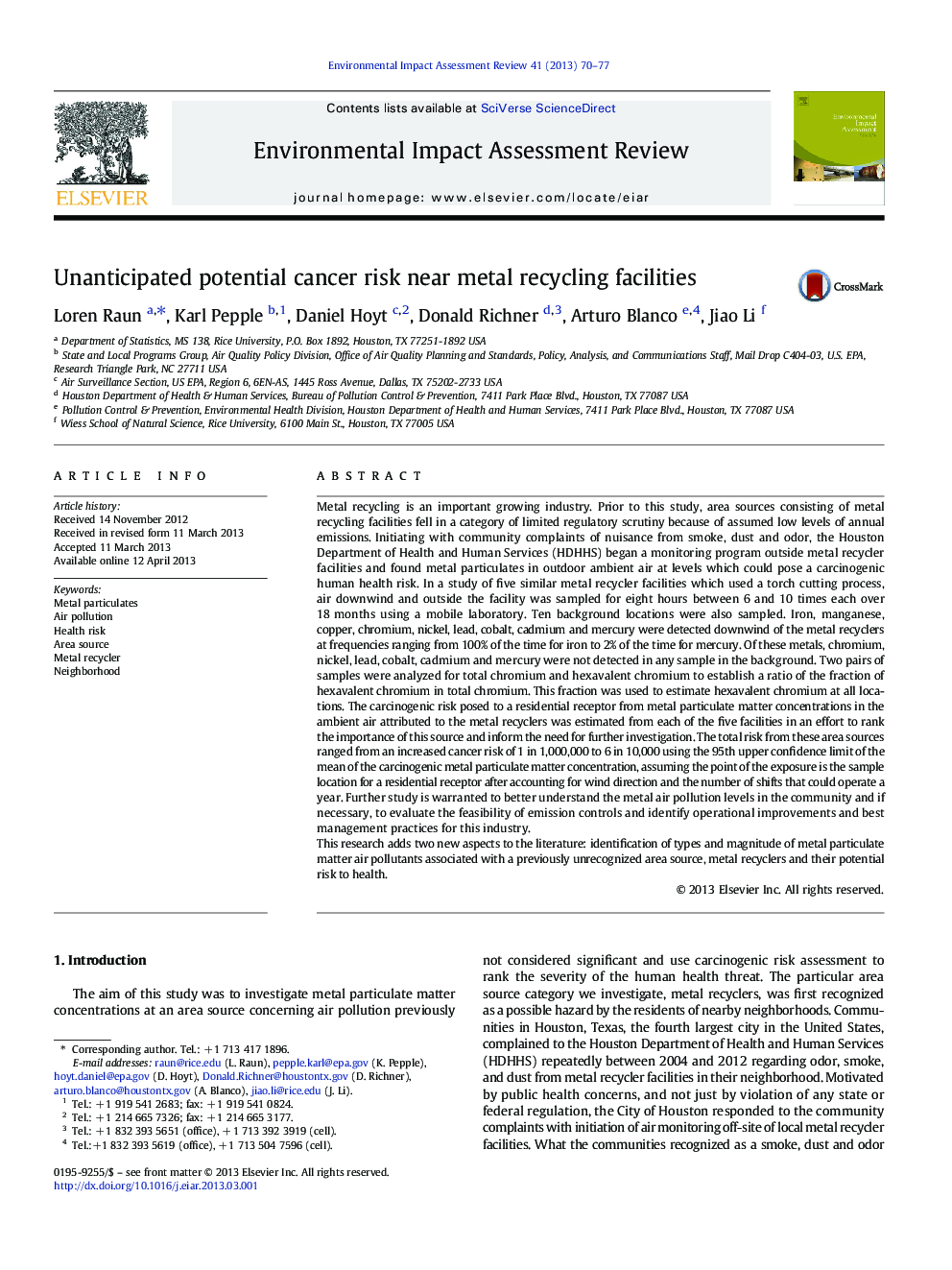| Article ID | Journal | Published Year | Pages | File Type |
|---|---|---|---|---|
| 1052770 | Environmental Impact Assessment Review | 2013 | 8 Pages |
•Air monitoring study in response to community complaints found metal contamination.•Metal recyclers found to potentially pose cancer from metal particulates•Chromium, nickel, cobalt and cadmium samples were detected in five metal recyclers.•These metals were not detected in background air samples.•Estimated increased cancer risk ranges from 1 in 1,000,000 to 8 in 10,000.
Metal recycling is an important growing industry. Prior to this study, area sources consisting of metal recycling facilities fell in a category of limited regulatory scrutiny because of assumed low levels of annual emissions. Initiating with community complaints of nuisance from smoke, dust and odor, the Houston Department of Health and Human Services (HDHHS) began a monitoring program outside metal recycler facilities and found metal particulates in outdoor ambient air at levels which could pose a carcinogenic human health risk. In a study of five similar metal recycler facilities which used a torch cutting process, air downwind and outside the facility was sampled for eight hours between 6 and 10 times each over 18 months using a mobile laboratory. Ten background locations were also sampled. Iron, manganese, copper, chromium, nickel, lead, cobalt, cadmium and mercury were detected downwind of the metal recyclers at frequencies ranging from 100% of the time for iron to 2% of the time for mercury. Of these metals, chromium, nickel, lead, cobalt, cadmium and mercury were not detected in any sample in the background. Two pairs of samples were analyzed for total chromium and hexavalent chromium to establish a ratio of the fraction of hexavalent chromium in total chromium. This fraction was used to estimate hexavalent chromium at all locations. The carcinogenic risk posed to a residential receptor from metal particulate matter concentrations in the ambient air attributed to the metal recyclers was estimated from each of the five facilities in an effort to rank the importance of this source and inform the need for further investigation. The total risk from these area sources ranged from an increased cancer risk of 1 in 1,000,000 to 6 in 10,000 using the 95th upper confidence limit of the mean of the carcinogenic metal particulate matter concentration, assuming the point of the exposure is the sample location for a residential receptor after accounting for wind direction and the number of shifts that could operate a year. Further study is warranted to better understand the metal air pollution levels in the community and if necessary, to evaluate the feasibility of emission controls and identify operational improvements and best management practices for this industry.This research adds two new aspects to the literature: identification of types and magnitude of metal particulate matter air pollutants associated with a previously unrecognized area source, metal recyclers and their potential risk to health.
